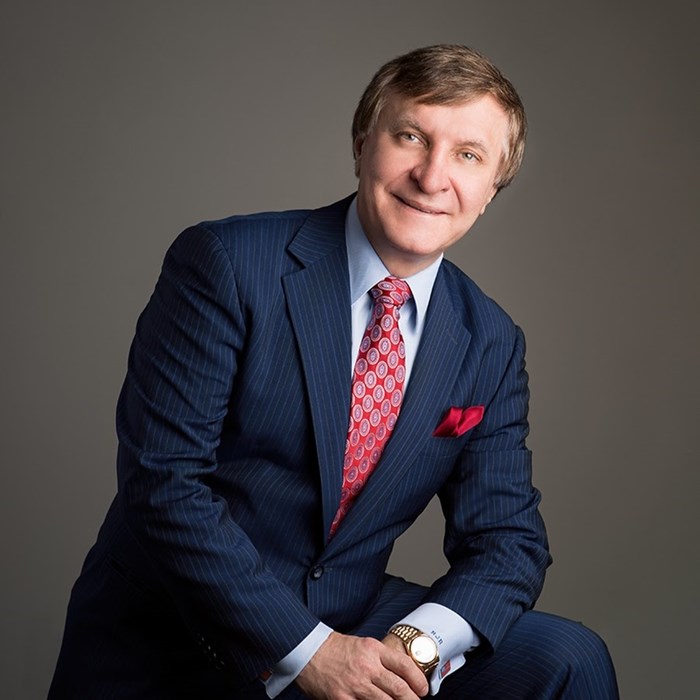Plastic Surgery Perspectives: Aesthetic Surgery

Editor's Note: "Plastic Surgery Perspectives" is a recurring series of posts on the PRS Resident Chronicles blog led by Stav Brown, MD, Plastic and Reconstructive Surgery Research Fellow in the Department of Surgery at Memorial Sloan Kettering Cancer Center, New York. In this installment, Dr. Brown interviews ASPS past President and PRS Editor Emeritus Rod Rohrich, MD.
PSR: Why did you choose plastic surgery – and aesthetic surgery in particular?
Dr. Rohrich: I always wanted to be a surgeon – in fact, I wanted to be a cardiac surgeon. The turning point occurred when I saw Melvin Spira, MD, DDS, perform a cleft lip repair at Baylor. He asked me to scrub in, and that was it. I saw him transform a child's lip into something that was going to be normal-looking and make such a significant impact on that kid's life – and that's what I wanted to do. Craniofacial surgery and pediatric plastic surgery transformed me. I wanted to help people to be as great as they can be, and that passion has led me to plastic surgery. Plastic surgery is both art and a science. I love using my hands and artistic skills; both are epitomized in plastic surgery – particularly in aesthetic surgery. I've had three careers, including hand surgery, microsurgery and craniofacial surgery. I've been fortunate to enjoy all these three different careers in my life as a plastic surgeon and it has been an evolution.
I don't really separate reconstructive from cosmetic surgery because they both have the same goal: Get the best artistic result, whether it's a breast reconstruction or breast augmentation, whether it's a facelift/rhinoplasty or a forehead flap for Mohs cancer reconstruction. For me, it's been a natural evolution. Aesthetic surgery is an extremely challenging area if you want to be an expert, as it requires a lot of art, skill and hard work.
PSR: How has aesthetic surgery changed since you started?
Dr. Rohrich: The ability to deliver consistent and excellent results has been the main change in recent years. Now we can truly fast-track people into learning how to be good plastic surgeons and aesthetic surgeons in much shorter periods of time because of how we teach it, as well as the ability to use videos and media. You still need the skills, but they can be taught more rapidly. The techniques have evolved rapidly as well.
Social media has transformed plastic and aesthetic surgery in particular. The patients are much more informed – although it has also given people a false sense of what's possible. I call it the "Kardashian effect." We see things that may or may not be a reality, and our job as plastic surgeons is to tell people that.
PSR: What are your main interests within aesthetic surgery?
Dr. Rohrich: I primarily perform facial surgery – mainly rhinoplasty and facelift surgery. If you love it, are skilled, can perform these procedures and teach them – and write about the advances – you become better every day. My favorite procedure is rhinoplasty. It's challenging because it's a surgery of millimeters and there's such intricate anatomy between the bone, cartilage and skin. It's also the most-protruding part of our face and really a part of our identity.
PSR: Which plastic surgeon most influenced you?
Dr. Rohrich: That would be Jack Gunter, MD, because he popularized the use of open rhinoplasty in both primary and secondary rhinoplasty, which proved transformational. I think the role of role models and true masters is very important to anyone who wants to go to the next level. I just saw one of my patients, a 17-year-old, who had a very significant nasal deformity. I performed her rhinoplasty six months ago. She has transformed not only in the way she looks, but also in the way she acts. She said she's experienced a significant change in her self-confidence – and I hear that every day from my patients. These are the things that make your day and that make it all worth it.
PSR: What role does technology play in aesthetic surgery?
Dr. Rohrich: Technology has played a major role in aesthetic surgery – not only in how we computer-image to let people know what's possible, but also in our ability to get better and safer results. This includes anesthesia, medications such as tranexamic acid (TXA) and our instruments, which are all technology-driven. These tools have been refined so we can do procedures better and more efficiently – and get better results.
PSR: What most excites you about the future of aesthetic surgery?
Dr. Rohrich: Noninvasive or minimally invasive procedures, including rhinoplasty and facial rejuvenation. We're on the cusp of having much better and improved technology to get results that will soon emulate a true rhinoplasty or facelift, and that's very exciting. It will not happen overnight; it's a gradual process, but I think we're going to see some epic changes in the coming years that will truly work.
PSR: What's your advice for residents interested in aesthetic surgery?
Dr. Rohrich: Go to a great plastic surgery training program to learn all the aspects and fundamentals of plastic surgery – not just cosmetic surgery. To be a good aesthetic surgeon, you must be a good doctor and a skilled plastic surgeon, and you learn from doing the difficult reconstructive cases. Work hard, be focused, write about it, publish and do not be afraid to make mistakes that will make you better. Find excellent role models you can emulate to help guide your career, go visit them and spend time with them. It's essential to love what you do. If you have that in your life, you have nirvana.